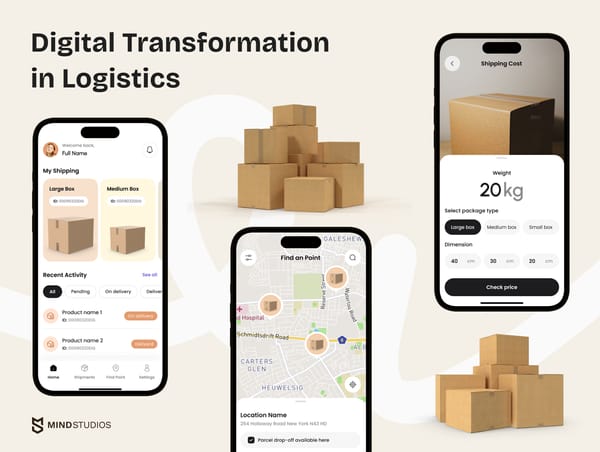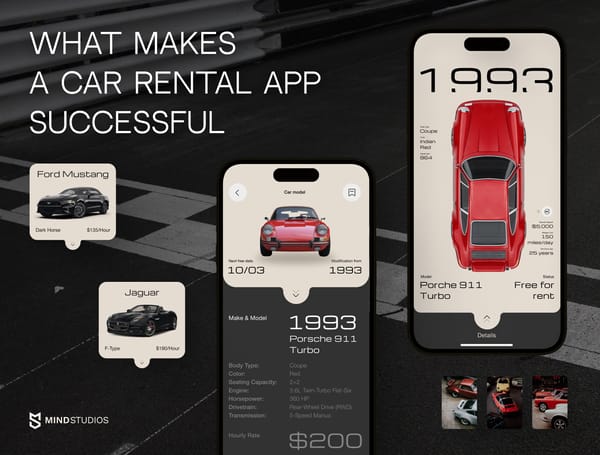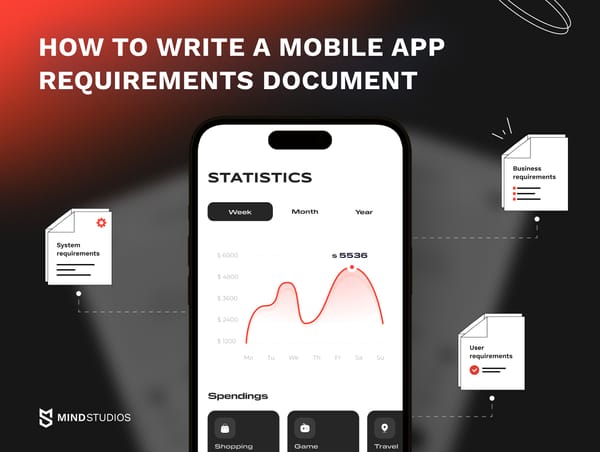Streaming takes over all sides of multimedia industry, from movies and TV shows to music. With the spread of fast internet and mobile devices, streaming now makes 83% of all music industry revenue in the US. If you want to create a music streaming app, today is the prime time for that daring but highly lucrative endeavor.
Mind Studios is among the companies that can help you with this. Under our belt, we have multiple products with audio streaming functionality, and among those, we are especially proud of our work on the platform for professional DJs, a Sony Music Entertainment partner, MyMP3Pool, which has both streaming and downloading functionality.
Why you should consider developing a music streaming app like Spotify
By the second quarter of 2021, the number of subscribers to music streaming platforms reached 523.9 million. This is a 71.8% increase from 2019, when the number of subscribers was 304.9 million. The popularity of streaming for music is at an all-time high and it is still growing. About 32% of this number of subscribers belongs to Spotify.
You might ask why would one build a music streaming app if there are industry leaders that already snatched huge shares of users all over the world.
Well, even if you’re not willing to challenge the behemoths, statistics show that smaller companies also have a chance to thrive on this market.
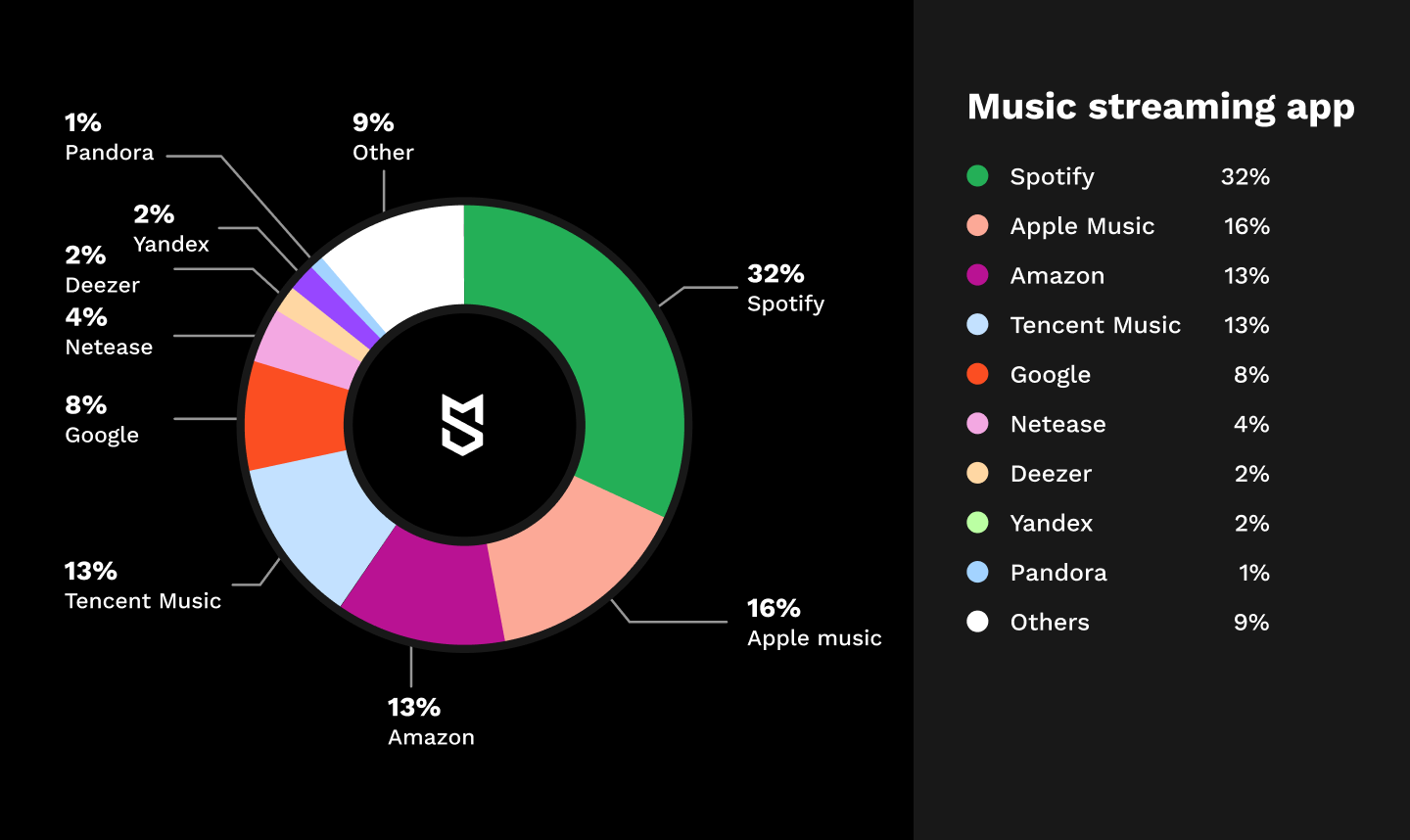
Case in point: a French music streaming service Deezer, founded just a year later than Spotify, might not be as renowned but is nonetheless quite successful! By the time we’re writing this article, Deezer is available in 182 countries, hosts over 73 million songs, and had $67.4M in revenue in 2021. It’s valued at $1.4 billion.
Here’s another example. TIDAL, originally a Norwegian music and video streaming service launched in 2014, was the second most downloaded music streaming app in Poland as of January 2022. This service’s global market share isn’t big but it’s still considered a fairly popular and successful service. TIDAL is also known as the company that pays artists the most out of all similar services.
Then there’s Anghami, a music streaming service for Arab states. According to last available reports from 2019, Anghami had 21 million MAU and 1 million paying subscribers.
So if you have an idea to build a music streaming app of your own but are hesitant to compete with giants, know that despite there being famous services like Spotify, Apple Music, YouTube, Amazon Music, the market still has enough space for smaller — local or niche — services to be successful and profitable.
5 Steps to Create a Music Streaming App
If you decide to entrust your music streaming app development to an outsourcing company like Mind Studios, you will most likely go through several stages of app creation. In this very short section, we’ll briefly introduce these stages so that you know what to expect. Creating a music streaming app usually involves the following steps:
- Step 1: Flesh out your sound streaming app idea
- Step 2: Choose the type of license for your application
- Step 3: Find the right development team
- Step 4: Work out the UI/UX design
- Step 5: Develop an MVP for your app
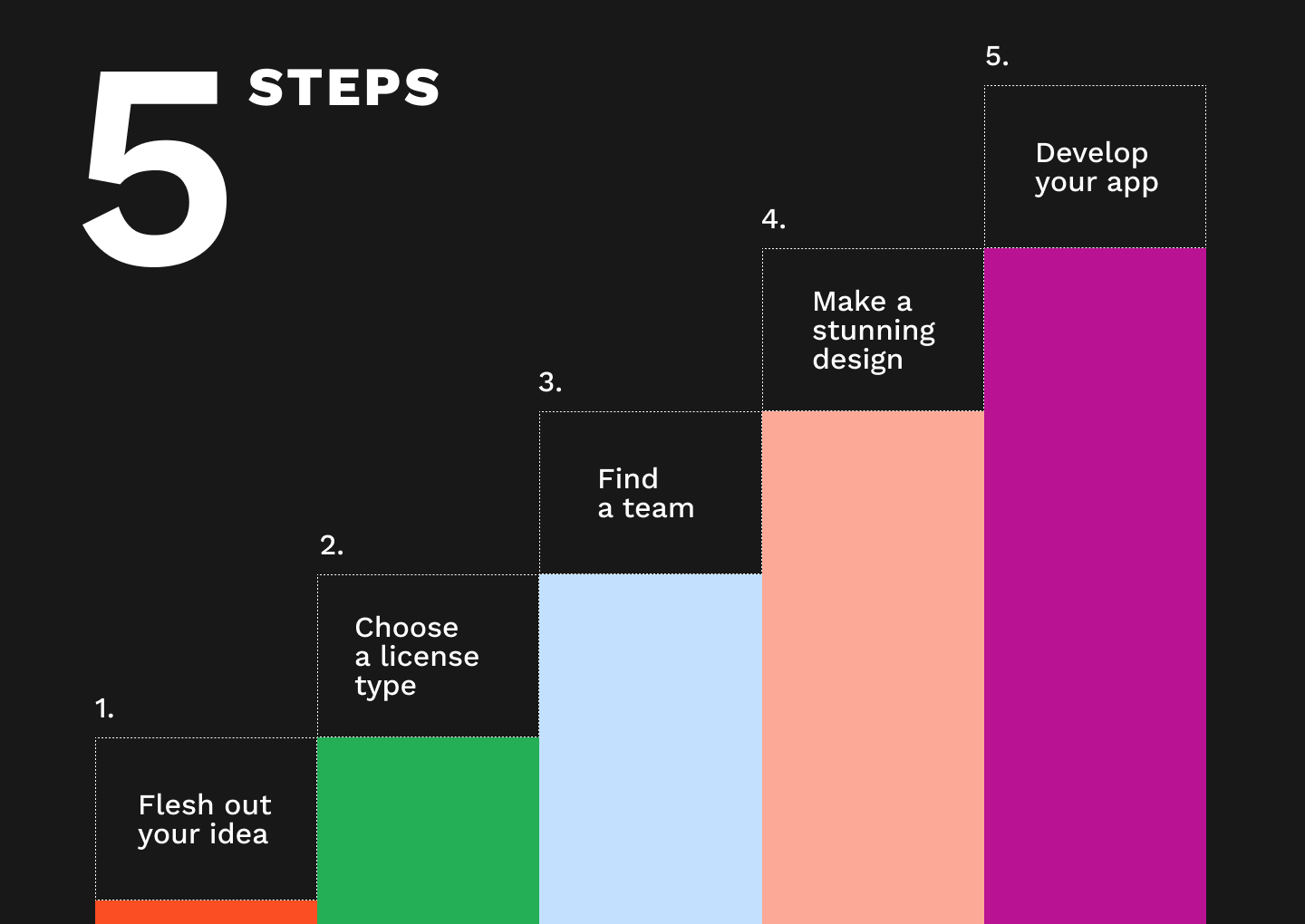
Step 1: Flesh out your sound streaming app idea
The more details about your idea you figure out before approaching developers the better. Make a list of features you want to implement, try to answer a question about the uniqueness of your app, and think about what you’d like to focus on to make your app popular.
All this information might transform into something different when you receive professional feedback but at least, you’ll have a starting point and a direction to talk about.
Step 2: Choose the type of license for your music streaming app
To play a recording by an artist, you’ll need to reach out to the rights' holder for a license and to pay royalties to artists; otherwise, you’ll be facing legal consequences. There are several types of licenses that are used by streaming services, and the choice will depend on the kind of music streaming app you’re building.
Step 3: Find a team to create your own music streaming app
Your choice of a development team will affect, among other things, the cost to develop a music streaming app. Development costs differ greatly in different parts of the world, and there are other parameters to consider, too. This process might take some time.
Step 4: Work out the custom music streaming app design
It’s essential to pay ample attention to the app’s UI and UX design if you want your music streaming app to be in demand, more so when you have a lot of competition.
Step 5: Develop an MVP
MVP (minimum viable product) is a great way to once again verify that your chosen direction is the right one before you pour all your money in. MVP allows you to save on costs, get feedback from real users, and, best case scenario, even start earning ROI.
Technical benefits of building a music streaming app
More and more people prefer streaming music to other options like downloading or physical carriers. That’s because the benefits of streaming are quite obvious to users:
- No need to spend time waiting for download to finish before playing
- The playlists are practically unlimited since you’re not restricted by device storage
Until some years ago, streaming was less popular because the quality of sound was sacrificed to make the file load faster. Today, this is no longer an issue — streaming services use special protocols to split files into “bite-sized” chunks to load simultaneously with playing. These protocols also allow creating multiple “streams” for the same file at different bit rates to cater to users with different internet speed.
The most used protocols today are Apple’s HLS (HTTP Live Streaming), Web Real-Time Communication (WebRTC), and MPEG-DASH (Dynamic Adaptive Streaming over HTTP) but alternatives pop out quite often. One of the relatively new options that’s said to be quite promising is Haivision’s open-source Secure Reliable Transport (SRT) protocol.
With a streaming app development company like Mind Studios where developers keep up with all the tech news and innovations, you’ll be able to easily analyze the selection of protocols and choose the one best suited to build a music streaming app like Spotify.
Features for your sound streaming app
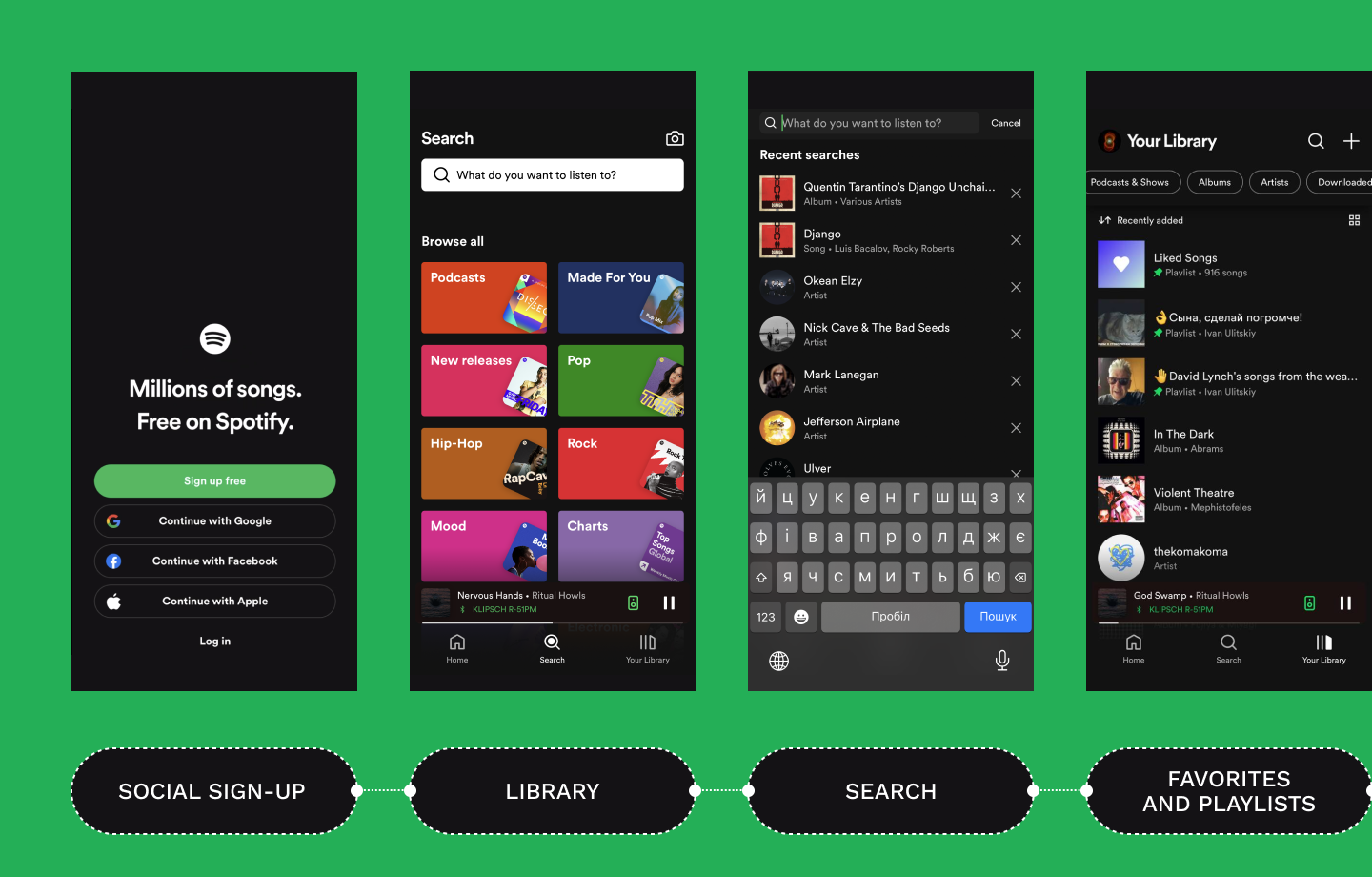
Spotify is pretty rich in features, as is Apple Music and their other competitors. In the list below we’ll offer you some features we deem important or beneficial for a music streaming app.
Onboarding
It’s generally a good idea to walk your new user through the functionality of your app. Onboarding is exactly that — a way to show off your design and feature set in a way that’s easy to grasp.
We recommend onboarding to be relatively short but entertaining. Too long of an introduction might get boring. If your app has many features, you can divide onboarding into parts and introduce everything when a user reaches new features in their exploration of the app.
Social sign-up
Logging in into entertainment apps with a social media account is the go-to option today as it’s quick and easy for users. It’s also not hard to implement — Facebook, Twitter, and other social networking sites have their APIs for developers to use.
Library and search
The music streaming app development revolves around the selection of music you’ll be offering. Your library needs to be searchable by song name and artist at the very least. If you’re not focusing on a specific type of music — for example, a single genre — we’d also recommend adding advanced search by tags or genres.
Finally, a section for newly released music is also very popular among music lovers.
Favorites and playlists
Your users need options to mark songs they like and those they don’t. At least one playlist for favorites is a must, but adding more would be beneficial as many people create playlists for mood or occasions like workout or work/studying.
Adding a feature to favorite an artist and follow their new releases has great potential as well.
Recommendations
This feature is best when powered by artificial intelligence and machine learning, which will analyze the music a user listens to and likes to recommend similar tracks. However, keep in mind that AI and ML aren’t the cheapest technologies these days.
It’s also possible to implement a simpler version of recommendations by pulling up songs from the same artist or genre/tag the user already listened to or added to their playlist.
Sharing
People are social creatures and we love sharing things we enjoy with others, so this feature will definitely be popular among music streaming app users. And for the app owner, it’s basically free marketing. A win-win combination for everyone.
Advanced features for a unique value proposition
Any new app needs an edge to win over users, and when you make a music app like Spotify, we can list some possible features for it to stand out:
- Tickets to online and offline live concerts
- Live streaming of concerts
- Music videos
- Offline access to music (i.e. download)*
- Audiobooks
- Podcasts
- Following other users’ playlists
- Comments and other communication features
*Downloading music is a tricky feature since it can be used for pirating. If you implement this feature, you need to take care of proper file encryption and piracy protection so that users can only play downloaded music from your music streaming app.
Finding an idea and obtaining a license
As we’ve already mentioned, to create a sound streaming service you’ll need to obtain licenses for the songs your app will host and pay royalties to rightful owners of those songs. There are different kinds of licenses:
Master license
This license basically allows the use of an audio track on your service. Record companies usually hold this license and can distribute it to streaming companies.
Public performance license
The second license you’ll need, this one allows you to not just use the track for some purposes but to play it to your users, since in most cases, streaming is considered public performance.
To obtain this license, you’ll most likely need to contact the artist country’s performance rights organizations aka copyright societies.
Reproduction license
If you’re going to sell individual tracks to users in any way, you’ll need this license. Although in most cases, this license is used for physical distribution like CDs, it can sometimes be required for streaming as well.
Royalty-free licenses
These are license that, as the name suggests, do not need you to pay royalties to artists or recording companies. They’re applicable to indie music creators. Instead of royalties, you’ll need to pay the license service for using recordings; the service will pay creators according to its own policies.
UI/UX design for a music streaming app like Spotify
To know how to develop a music streaming app that’s geared towards success, it’s important to pay special attention to the best practices of UX design.
An entertainment app needs to be easy to navigate, first and foremost. And the more features you add to it, the more important it becomes to ensure intuitiveness. The core of any entertainment app is that it needs to be user-friendly.
On the other hand, interfaces of music streaming services vary greatly, both visually and in user journey. The best advice we can give to anyone drawing up a plan to build an app like Spotify is to conduct thorough research into your target audience demographic. The age of your users, their cultural background, and behavior in apps similar to yours will affect heavily their expectations UI/UX-wise.
Tech stack for your music streaming app like Spotify
A song streaming app will have to deal with a number of fairly complex technology pieces. In the table below, we’ll list the tech stack we used on our previous projects that involved audio streaming.
| Backend | |
|---|---|
| Servers | Dedicated OVH servers, Amazon EC2 instances |
| Framework | Ruby on Rails, Elixir, Node.js |
| Database | PostgreSQL,MySQL, MongoDB, Redis |
| Data storage | Amazon S3, Google Cloud Storage |
| CDN services | Cloudflare, OVH CDN, Amazon CloudFront, Microsoft Azure |
| Streaming protocols | Apple HLS, MPEG-DASH, WebRTC |
| Streaming playback | FFmpeg, AWS Lambda, m3u streams |
| Tracking / distribution tool | Firebase Crashlytics / Distribution, Sentry, Datadog |
| Sign-up / Sign-in | Facebook API, Google API, Amazon SES, Apple sign in |
| Notifications | Twilio, APNs notifications, Firebase Cloud Messaging |
| Search | Elasticsearch |
| Sharing | APIs |
| Playlists | Custom solution |
| Payments | Stripe, Paypal, Authorize.net |
| Commenting | Custom solution |
| Following users | Custom solution |
| iOS app | |
| Language | Swift |
| UI layer | SwiftUI / UI Kit |
| Architecture | Composable Architecture |
| Dependencies management | Bundler, Swift Package Manager |
| Android app | |
| Language | Kotlin |
| Architecture | MVI architecture |
| Libraries and components | Kotlinx Serialization, Coroutines, Android Jetpack, Gradle, OkHttp |
Depending on the exact feature set of your audio streaming app and your budget, your development team might offer you alternative solutions.
Choose the right music app developers
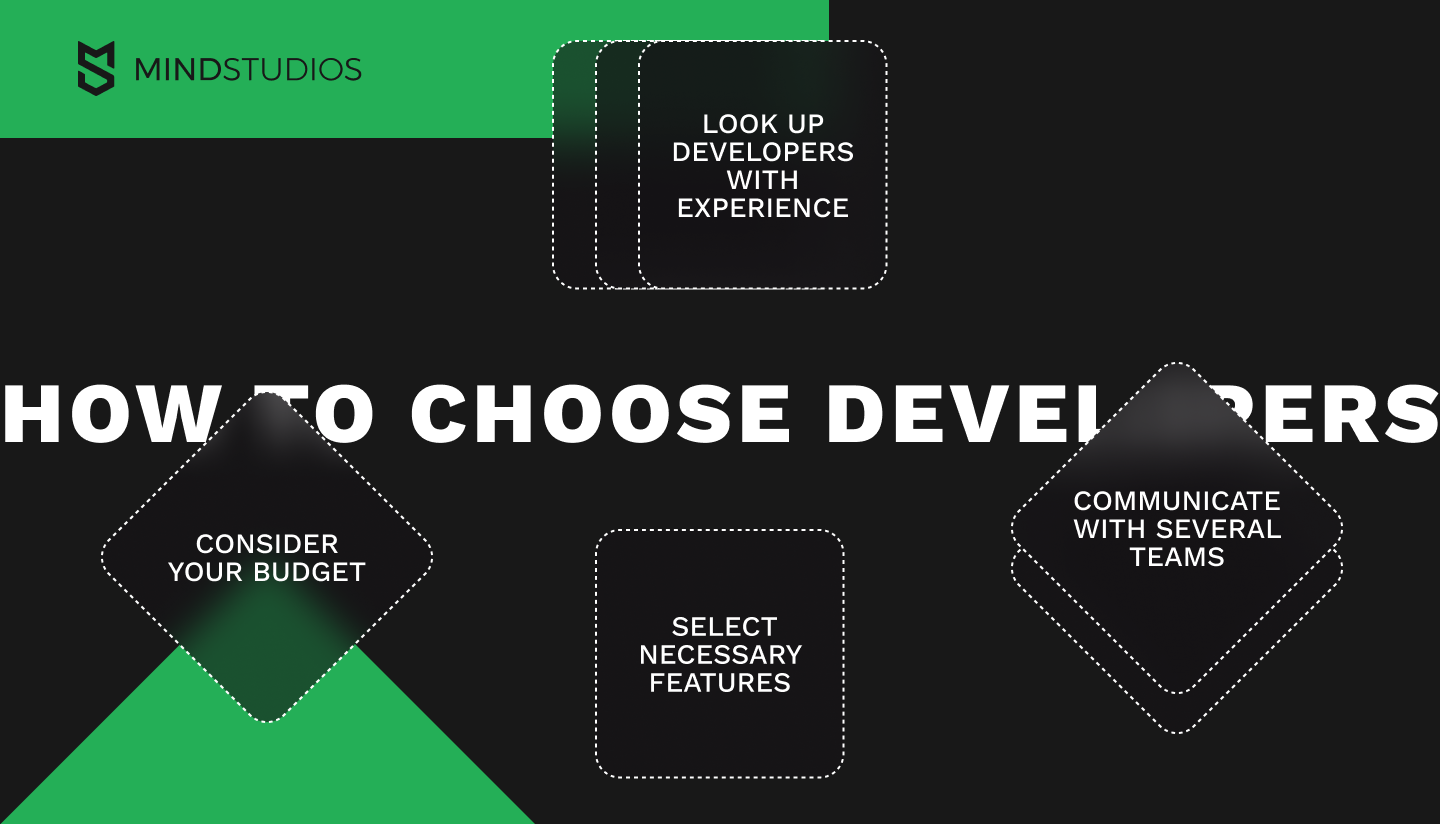
Today, software development is a wide industry with numerous individuals and companies all over the world, which makes it sometimes daunting to find a company to develop your music streaming app. Here, we’ll offer you some advice on what things to take into account when making the choice.
Consider your budget
Budget is what rules over the development process. It will command your feature set, your tech stack to a degree, and your options for developers.
Developers in different parts of the world have different hourly rates, from around $150 per hour in the US to about $50 in Eastern Europe.
Decide on the general scope
While this might undergo changes when you start working with the team and doing research, it’s better to approach potential partners with a scope in mind. This will make it easier to communicate and see if the team is qualified to build your product.
Choose developers with relevant experience
It’s always better to entrust your project to someone who worked with a similar task before as they’ll know the ropes and intricacies of the niche, will be acquainted with the tech solutions, and will be able to work faster due to experience.
Take into account time and culture differences
Most developers these days have a solid level of English language skills, so understanding each other shouldn’t be too difficult. But culture differences can sometimes complicate matters as people around the world have different work ethics and habits, and they can also view the same product differently.
That is not to say that cultural differences are an insurmountable barrier, of course — a team dedicated to do quality work will try and reach understanding with any client. But this might prolong the development process some and also lead to misunderstandings.
Finally, time difference is an important factor since you want to be able to communicate with the team on a somewhat regular basis to be kept in the loop, and you probably don’t want those calls to take place at the time you’d rather be sleeping.
Developing a music streaming app like Spotify with an outsourcing company will require the following specialists:
- Project manager: 1
- Business analyst: 1
- UI/UX designer: 1–2
- iOS developer: 1
- Android developer: 1
- Backend developer: 1
- QA engineer: 1–2
How much does it cost to make an app like Spotify?
The number and complexity of features will dictate the cost for your custom music streaming app. Here, we can offer you a very rough estimate for the activities we adhere to and features we’ve listed above.
| Activity | Time, h | Cost, USD |
|---|---|---|
| Discovery and market research | 80+ | 3,600 |
| UX prototyping and UI design | 240 | 10,800 |
| iOS app development | 920 | 41,400 |
| Android app development | 940 | 42,300 |
| Backend development | 860 | 38,700 |
| Testing | 430 | 19,350 |
| Project management | 380 | 17,100 |
| TOTAL | 3,850 | 173,250 |
Developing apps for one platform instead of two will cut the check to a degree, but since apps will share the same backend and will be managed by the same project manager, the cost won’t be twice as low. You can also cut costs by postponing some features to later iterations or by releasing your app for one platform at first and following with the other after getting some ROI or funding.
Mind Studios' experience in developing music streaming apps like Spotify

At Mind Studios, we know how to make a music streaming app from experience: we’ve helped rebuild and migrate MyMP3Pool, one of the leading music platforms for professional DJs.
MyMP3Pool is a web platform since its specific purpose makes it more convenient for users to use on computers rather than mobile devices. When we built this new platform for the old platform’s users, we conducted a lot of research and surveys, pinpointing the biggest challenges and pains users faced.
We’ve built into MyMP3Pool sophisticated search functionality, quality streaming and downloading for tracks in bulk, overhauled the UI and UX design, and made the platform work faster and smoother. We also performed seamless migration of users from the old platform to the new one without a hitch. As a result, we’ve managed to help our clients grow the user base and increase user satisfaction greatly.
Read more about the process in our MyMP3Pool case study.
Conclusion
The music streaming industry is a rapidly growing one, which makes it one of the most opportunity-rich niches on the market. If you want to create a music streaming app to get a piece of this pie, it’s essential to catch the time before the market gets oversaturated. At this time, it’s still relatively easy to make a streaming service that will stand out and gather an audience quickly.
Mind Studios has ample experience in implementing streaming technology in all kinds of apps and in creating music streaming platforms in particular. We’ll be happy to answer all your questions during a 45-minute free consultation. Book it to get valuable insights ASAP.

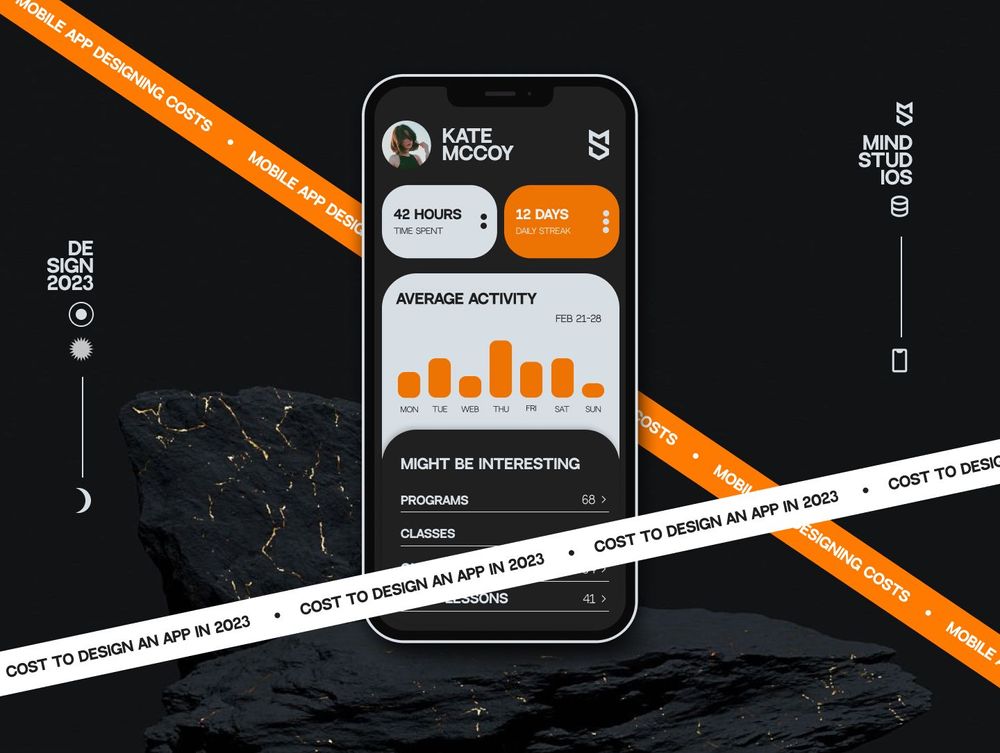
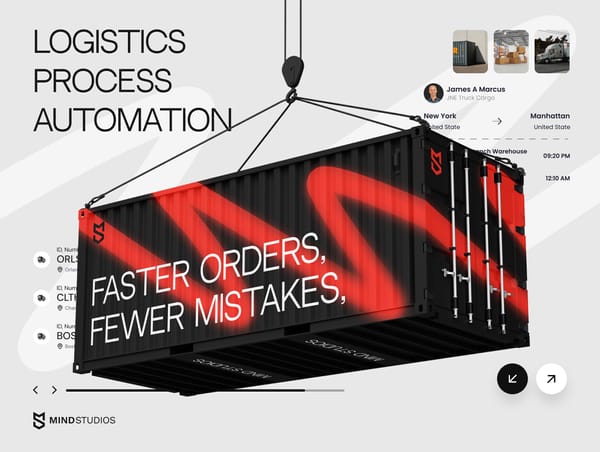
![How to Create an On-Demand Medicine Delivery App [Expert Guide]](https://themindstudios.com/blog/content/images/size/w600/2025/03/IMG-1-Cover-6.jpg)
